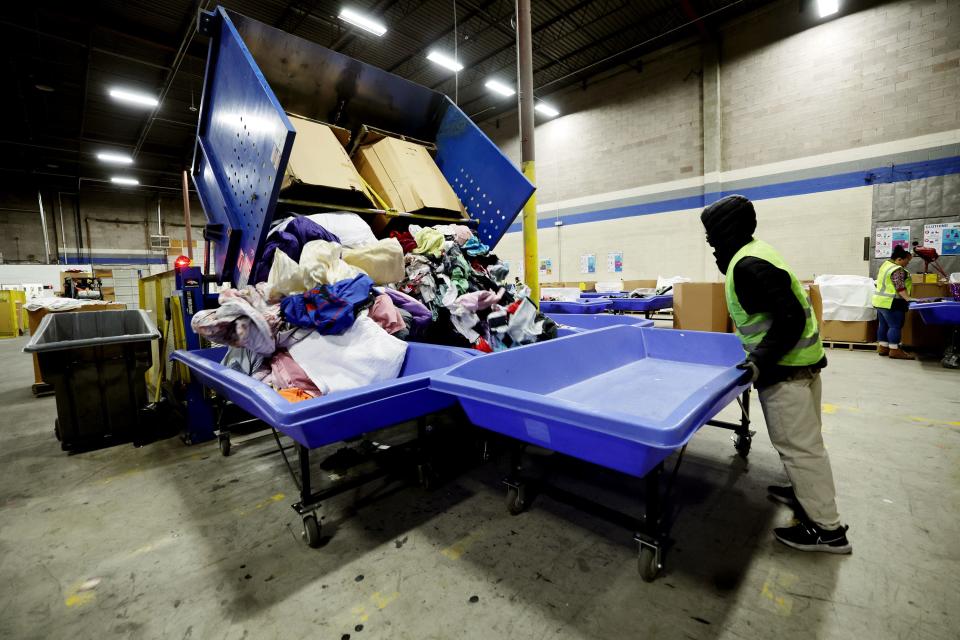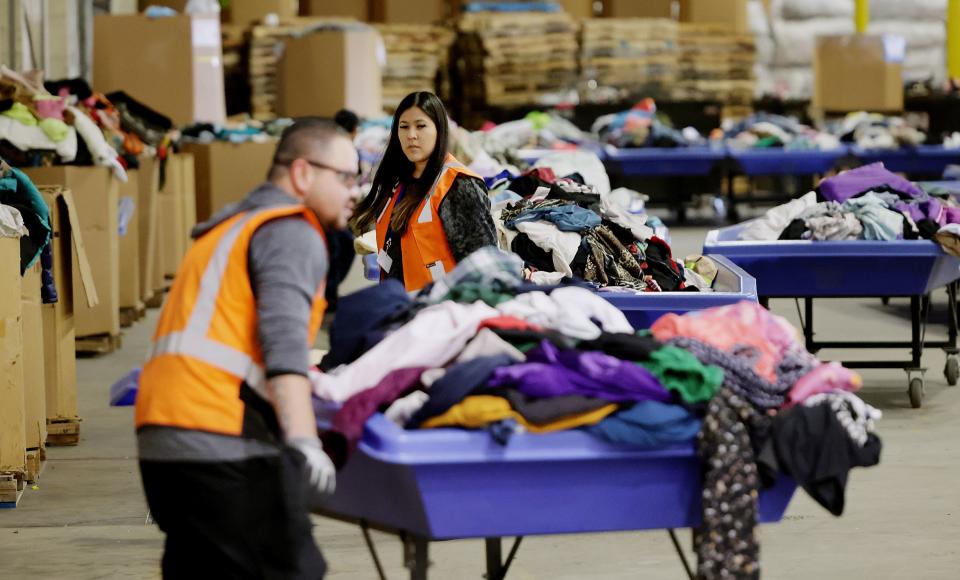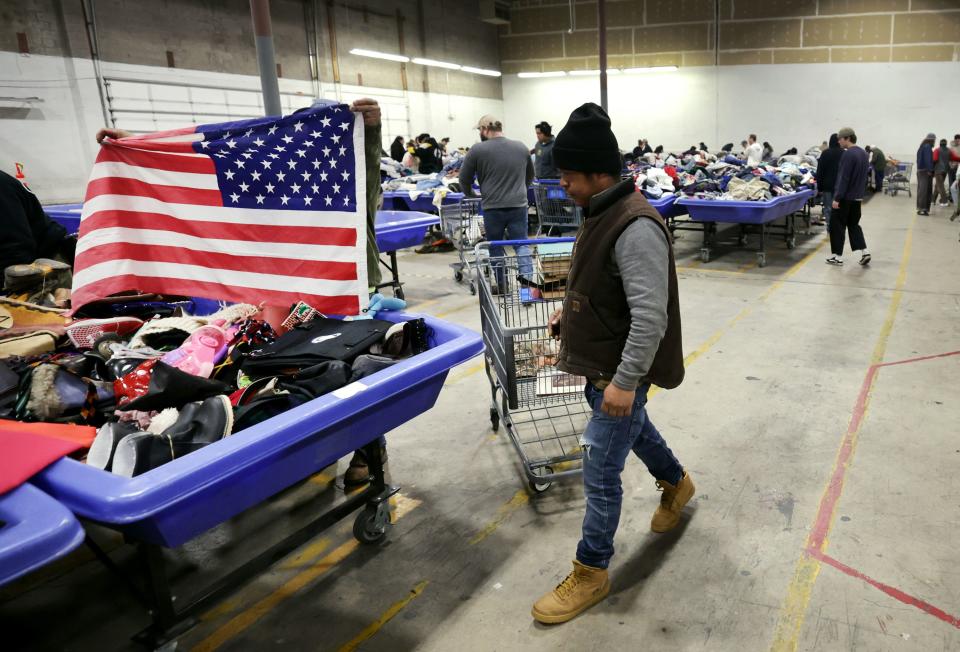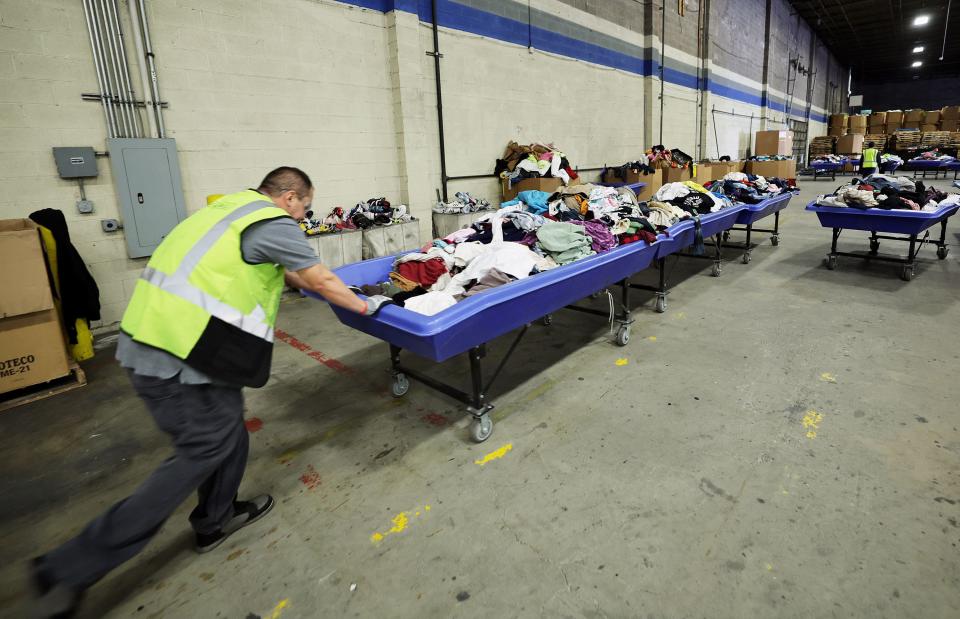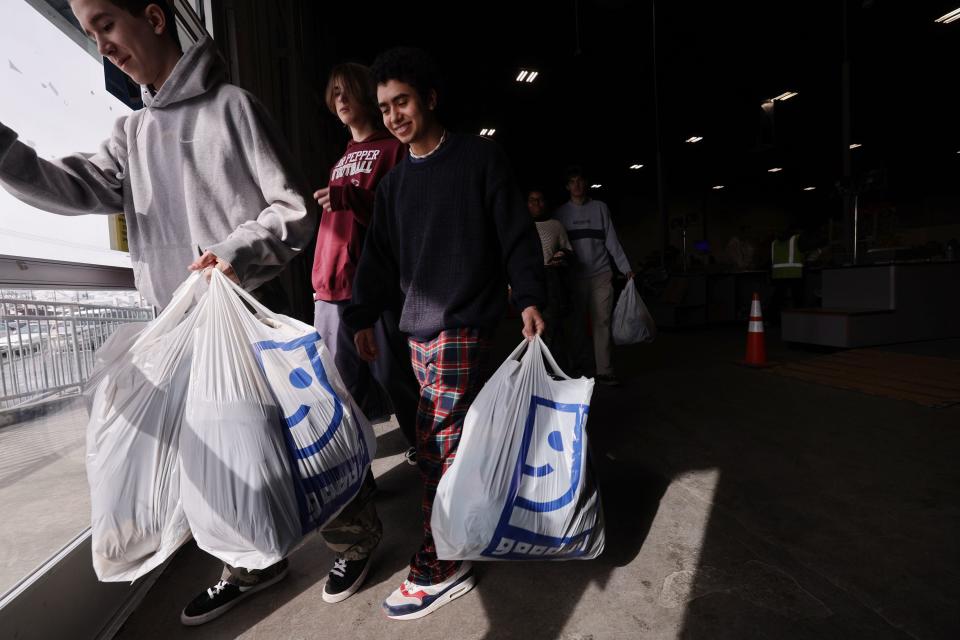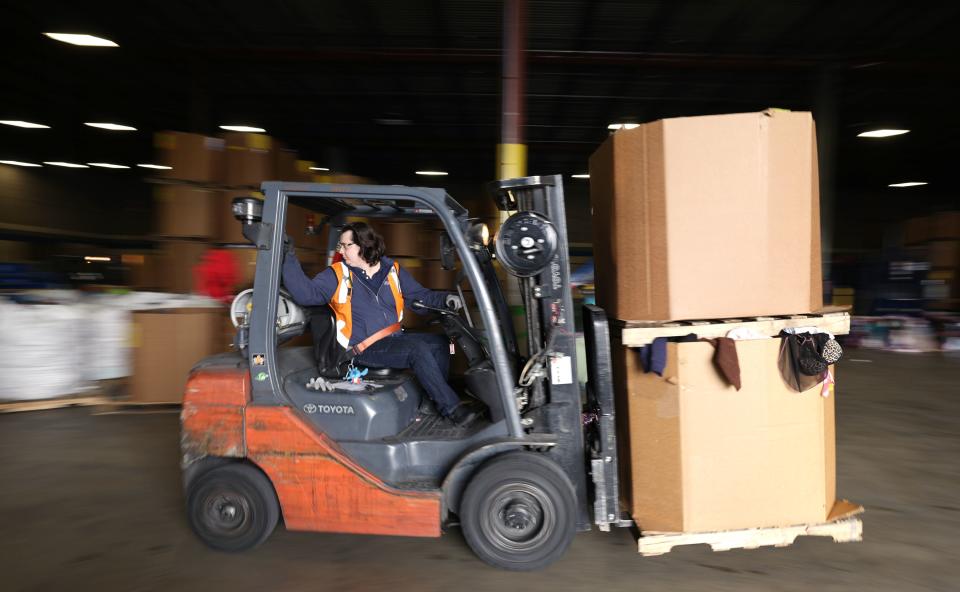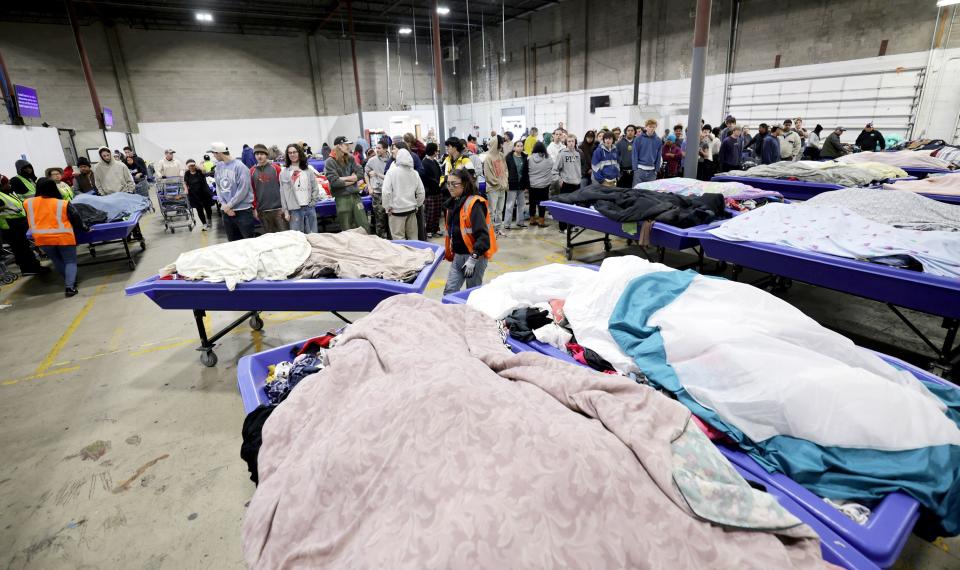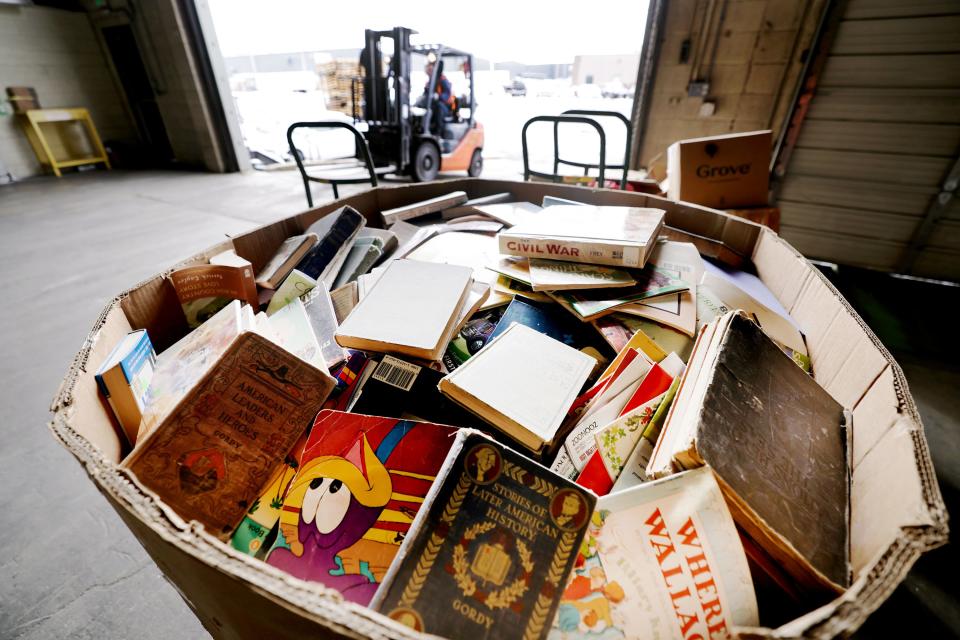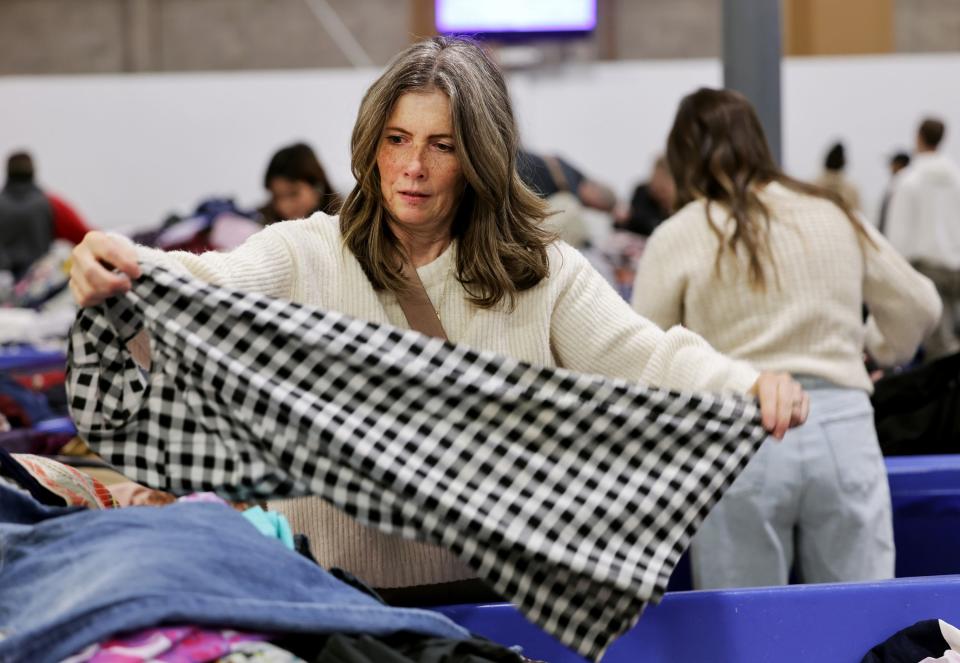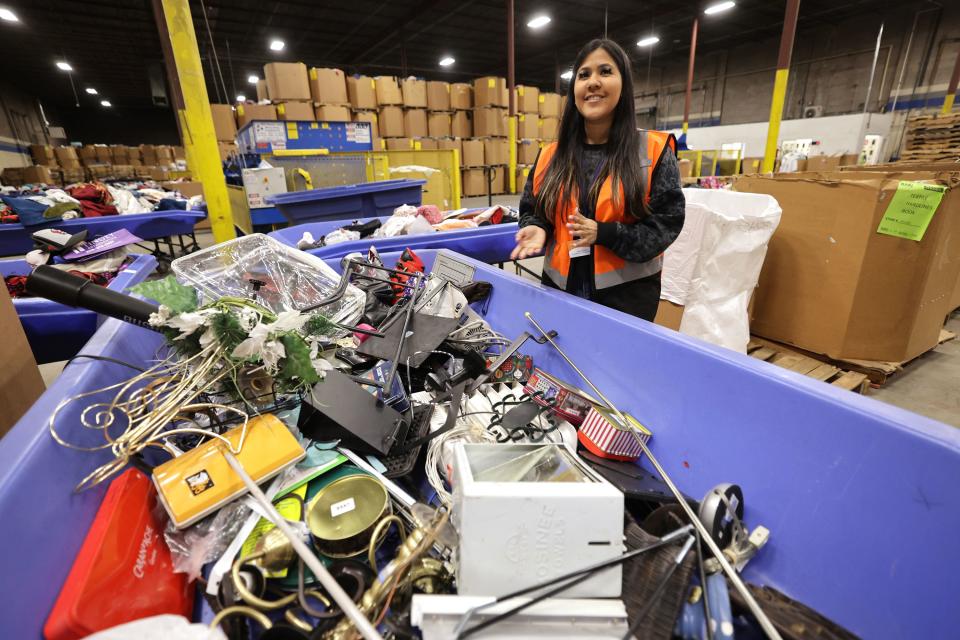Dive into ‘the bins’: How Goodwill Outlet shoppers take thrifting to the next level
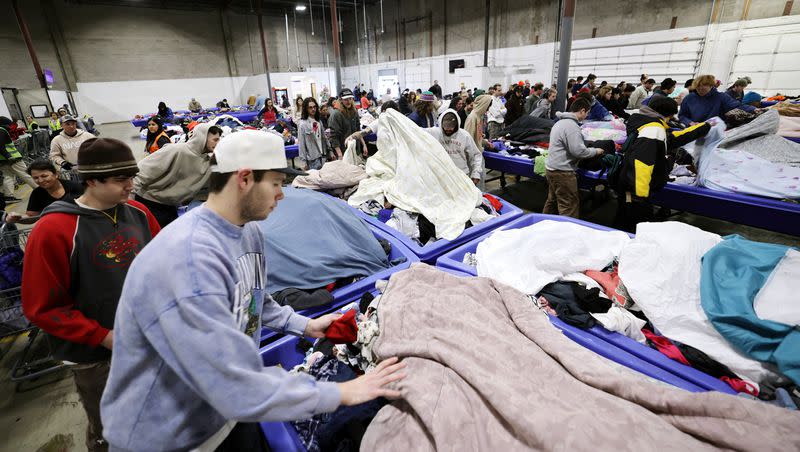
It’s a Saturday morning at the Goodwill Outlet in Salt Lake City, and Hannah Rigby has her hair tied back and her gloves on — she’s ready to dive in. What may look like piles of junk to anyone else is a treasure trove to her.
As she digs through mounds of textiles, a floral quilt catches her eye. She pounces before anyone else can get to it, scans over it briefly, just long enough to notice the dainty black letters labeling each flower. She throws it in her cart — there’s no time for second-guessing here.
Rigby spends the morning like this, making her way down lines of 73 large blue bins of secondhand goods. There are shoppers directly to her front and back doing the same, most of whom have been here since before the store even opened.
Some are there to shop for themselves, but most are resellers who frequent the outlet almost every day.
“It’s a job for them,” said Ana Montes, Goodwill’s recycling and logistics manager. “They’re here for hours. We know a lot of their names — we even know what they do.”
Rigby keeps her eyes peeled for high quality brands, like Nike, Adidas and Patagonia. After hours of digging, she leaves with a trash bag full of treasure, only costing her about $15. She’ll keep some of it for herself, sell some and give some to her friends.
Related
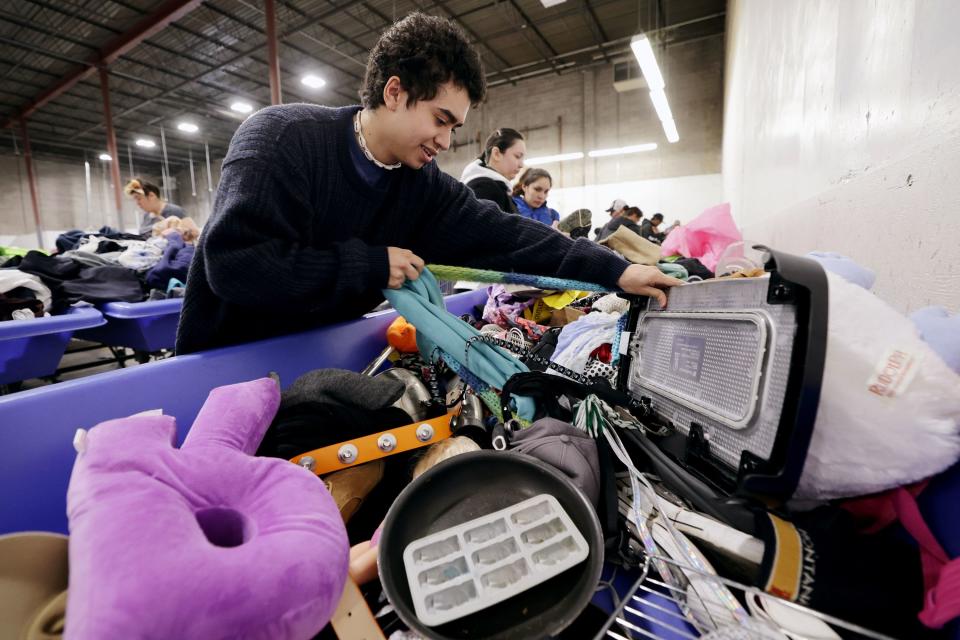
A unique thrifting experience
The Goodwill Outlet, often called “the bins,” takes thrift shopping to a whole new level. Products are sold by the pound — $1.99 per pound for the first 25 pounds — and the price decreases as you buy more.
So here’s the math: If a single T-shirt weighs a quarter pound, it’s possible to get 20 shirts for $10. That’s why the outlet is so popular for resellers, who often walk away with full trash bags.
So what’s the catch? If it’s so cheap, why doesn’t everyone shop at the outlet?
The answer may be that not everyone enjoys sifting through mountains of old, typically unwashed goods. The outlet sells whatever isn’t sold in the Easterseals-Goodwill stores.
It isn’t set up like a typical thrift store — instead of being organized on racks and shelves, products are thrown into bins and only have three categories: textiles, books and hardline goods, like shoes and purses.
Some people enjoy the thrill of the search, but others feel that low prices are not worth the dumpster-diving and limited organization.
“If you go looking for a specific thing, you’ll probably be disappointed,” Rigby admitted.
The ‘science’ of bins shopping
In Rigby’s words, bins shoppers “aren’t joking around” — they have it down to a science.
Their quest begins at around 8:45 a.m. when they start lining up outside the Goodwill Outlet ahead of its 9 a.m. opening. When the doors swing open, the hunt begins.
“I just kind of like burrow in there like a squirrel,” said Brighton Platt, who resells clothing online and at pop-up shops.
Rigby and her friends have developed a system in which each person takes a section of the warehouse to cover more ground.
About 59,000 pounds of merchandise cycles through the Goodwill Outlet daily, so shoppers have to know what they’re looking for. When Rigby sees something she likes, her first move is to check the size, then look it over for rips or stains.
Experienced thrifters looking for vintage goods will often check to see if clothing is single- or double-stitch — single-stitch often means it was made before the late 1990s. Many can even discern the quality of materials just by feeling them.
“As soon as they’re grabbing it, they can tell what it is,” Montes said.
Not everyone is there for the clothes — the bins attract a robust crowd of booksellers who know the value of a book just by scanning it with an app.
Tamara Jones visits the bins weekly because it’s the cheapest way to outfit her 10 children. Her shopping motto is simple: “Just put it in the car and look at it later.”
People often examine their spoils more thoroughly during the rotations of the bins. About four times a day, employees in orange vests usher shoppers to the edges of the warehouse to make room for old bins to be wheeled out and new ones to come in. As shoppers wait near the walls, they sort through their carts, deciding what to keep and what to put back.
Most customers are at the outlet all day — from the moment it opens at 9 a.m. to the last rotation at around 3:30 p.m.
Related
Vintage in vogue: The newest trends in fashion are nothing new at all
Retail therapy through online shopping cannot ‘cure’ depression, but it is addictive
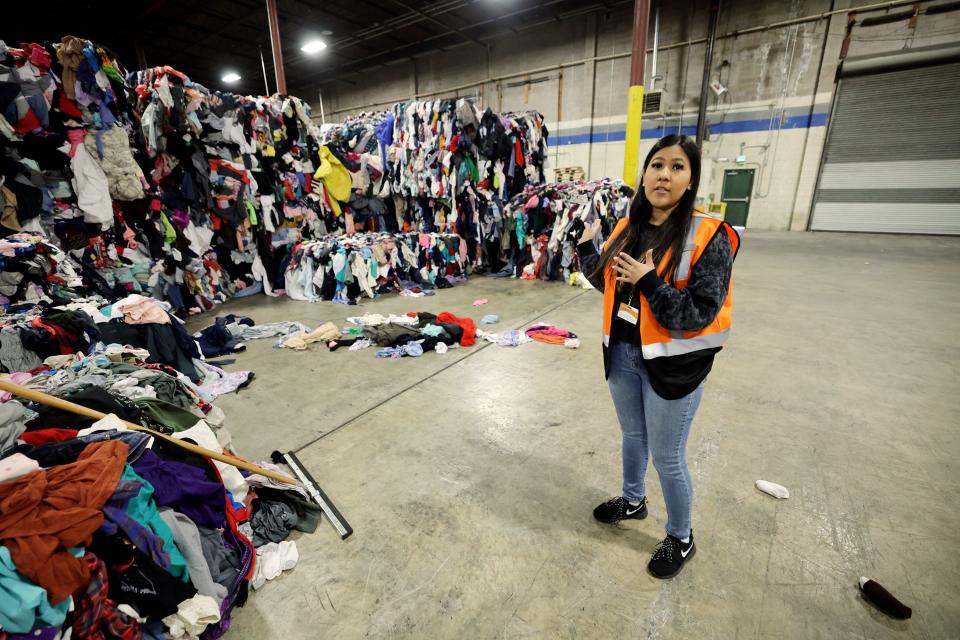
The ‘vibe’ of bins shopping
The seemingly cutthroat environment of the Goodwill Outlet can be intimidating to newcomers. One Google review called it a “mad house.”
Montes admitted that the place can be hectic. “If you find that vintage tee and you know what it’s worth, you’re going to want it, but if somebody else in front of you knows what it’s worth, what’s going to happen is there’s a possibility that they’re going to disagree on who saw it first, who grabbed it first,” she said.
In those instances, outlet employees will confiscate the item so no one can have it. However, Montes says situations in which staff have to intervene are rare.
“We take safety very seriously,” she said. “We do have a code of conduct that we are very strict on.”
Because most shoppers are regulars, they know the rules and are eager to explain them to newcomers.
While shoppers can be intense, the atmosphere is not always every-thrifter-for-themselves. Like customer Allan Jensen, who goes to the bins almost every day to find things he can take apart to create trinkets to give to people.
Regulars often end up getting to know each other, including what kind of items they’re looking for. Rigby says if she finds something a fellow thrifter might like, she’ll give it to them — and the favor is often returned.
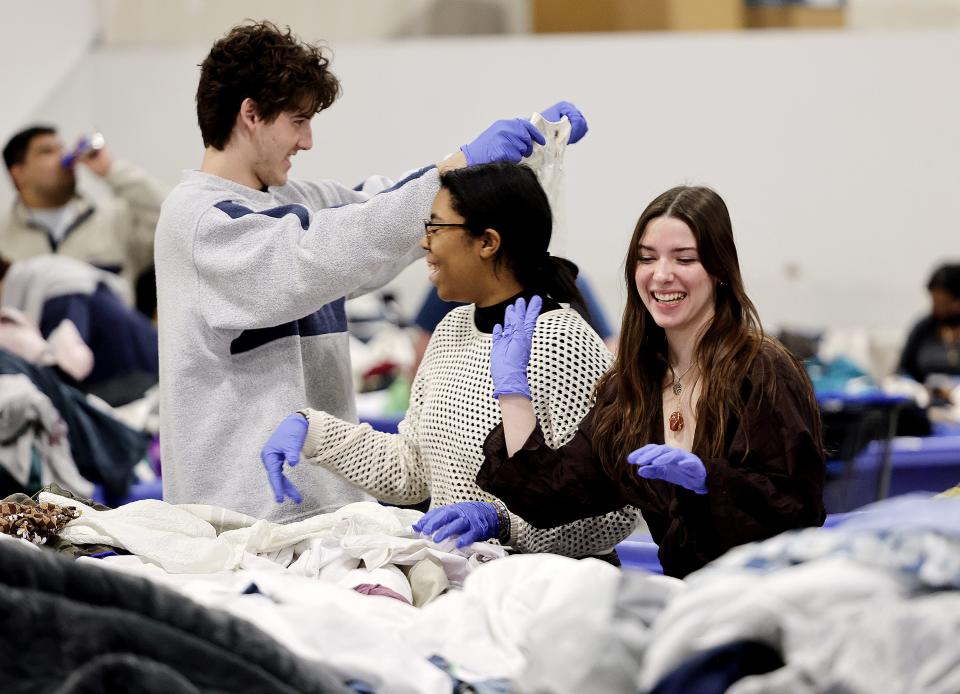
Thrifting: more than a good deal
“I feel like as a younger generation, we are more aware of the damage that we do cause with the environment,” Montes said. That, along with thrifting TikToks and the trendiness of vintage clothing, may be a reason for the growing popularity of second-hand shopping, especially among youth.
It can take more than 713 gallons of water to grow the cotton used to make one T-shirt — you save that much water when you buy a used T-shirt rather than a new one.
Items that aren’t sold at the outlet don’t go to waste — they’re usually sent to buyers overseas, where they have another chance to be sold.
“So it’s just one giant recycling process,” Montes said.
Some argue that goods as cheap as those found at the bins should be left for people who can’t afford anything else. But Rigby pointed out that there’s more than enough to go around.
“It’s not like people’s old clothes are a limited resource,” she said.
Montes agreed that thrifting is for everyone: “We get people that come in Mercedes Benz, and we get people who come in a beat-up car.”
Related
What can you do to reduce your carbon footprint? Here are some tips
Greenpeace Germany study says it found hazardous chemicals in some Shein products
